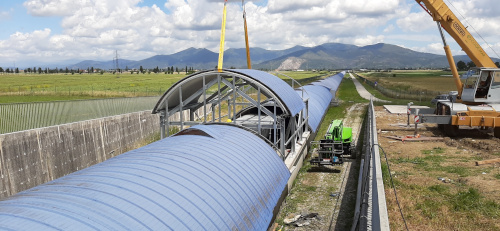Virgo History

In 1987, the scientists Adalberto Giazotto and Alain Brillet proposed a gravitational-wave detector, named Virgo.In 1989, a proposal was submitted to the French Centre National de la Recherche Scientifique (CNRS) and the Italian Istituto Nazionale di Fisica Nucleare (INFN). The proposal was approved by them in the early 1990s.
The construction of Virgo, in the countryside near Pisa, in Italy, began in 1997 and the European Gravitational Observatory (EGO) was founded in 2000.Virgo was inaugurated in 2003 and, after years of commissioning, scientific observations began in 2007. In the same year an agreement to operate Virgo and the LIGO detectors, in the USA, as a ‘single machine’ was signed.
The upgrade of Virgo to Advanced Virgo, with the aim of largely improving detection capabilities, was approved in 2009 and completed in 2017.
The first detection of a gravitational wave – signal GW150914, produced by the merger of a system of two black holes – was made by the LIGO Scientific Collaboration and the Virgo Collaboration (LVC) on the 14th of September, 2015. A new window on the Universe had been opened. The 2017 Nobel Prize in Physics was awarded to R. Weiss, B. C. Barish and K. S. Thorne; all three of them members of the LVC.
In August 2017, Advanced Virgo completed its upgrade and joined the two LIGO detectors in the second observation period. Two weeks later, on the 14th of August, 2017, Advanced Virgo made its first detection of gravitational waves, alongside the two Advanced LIGOs. Again, the signal, named GW170814, was produced by the merger of a binary system of black holes.
Three days later, however, the LIGO-Virgo global network detected a very different signal, named GW170817. This signal was produced by the merger of a binary system of neutron stars and was also observed with light from both space and from the Earth. This advance was made possible by the precise localisation of the source in the sky that was provided by the LIGO-Virgo network.
GW170817 marked the dawn of the era of multi-messenger astronomy with gravitational waves.
As of today, nearly a hundred of gravitational wave events have been observed by the Advanced LIGO and Advanced Virgo detector network.